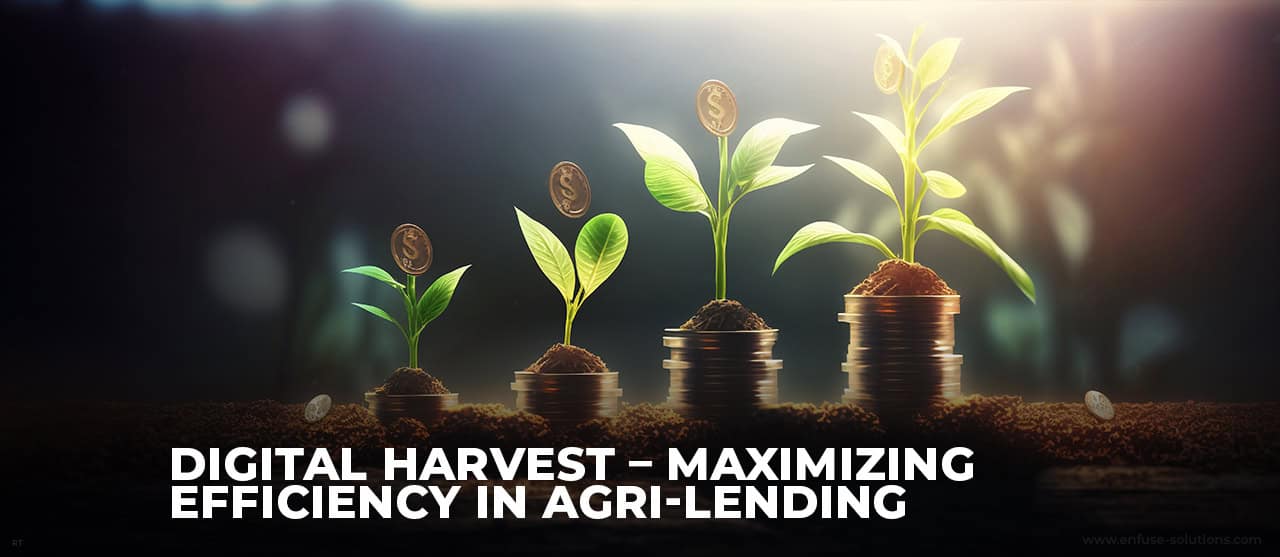
In today’s rapidly evolving agricultural landscape, the fusion of technology with traditional lending practices has become imperative for driving efficiency and sustainability. This digital transformation not only streamlines processes but also empowers farmers and lenders alike to make informed decisions.
Let’s delve into the market trends and statistics from Gartner to understand how digitalization is revolutionizing agri-lending.
1. The Rise Of Agri-Fintech Solutions
Gartner’s recent analysis shows that the global agricultural fintech market is experiencing robust growth, fueled by the increasing adoption of digital solutions in farming and lending practices. By leveraging technologies such as artificial intelligence (AI), machine learning (ML), and blockchain, agri-fintech companies are reshaping the lending landscape, making it more accessible and efficient for farmers.
2. Enhanced Risk Assessment And Credit Scoring
Traditional lending models often struggle to accurately assess farmers’ creditworthiness, leading to higher risks for lenders. However, Gartner’s research indicates that AI-powered algorithms are revolutionizing risk assessment in agri-lending. By analyzing vast datasets including crop yields, weather patterns, and market trends, these algorithms provide lenders with deeper insights into the financial health and repayment capacity of farmers, thereby reducing default risks.
3. Democratizing Access To Capital
One of the significant challenges in agricultural finance has been the limited access to capital for smallholder farmers. According to Gartner’s findings, digital platforms are bridging this gap by offering alternative lending solutions tailored to the needs of small-scale farmers. Peer-to-peer lending networks, crowdfunding platforms, and mobile banking applications are empowering farmers to access capital swiftly and affordably, driving financial inclusion in rural areas.
4. Seamless Loan Processing And Disbursement
Traditional loan application processes are often cumbersome and time-consuming, hindering farmers’ ability to capitalize on timely opportunities. Gartner’s insights reveal that digital platforms are revolutionizing loan processing and disbursement through automation and digitization. By offering online application portals, e-signature capabilities, and real-time fund transfers, agri-lenders are expediting the lending process, enabling farmers to access funds when they need them the most.
5. Sustainable Agriculture Financing
With growing concerns about environmental sustainability and climate change, there is a rising demand for agricultural finance solutions that promote sustainable practices. Gartner predicts that the integration of sustainability metrics into lending criteria will become increasingly prevalent in the agri-finance sector. By incentivizing farmers to adopt eco-friendly practices such as precision agriculture and organic farming, lenders can mitigate risks associated with climate volatility while fostering long-term sustainability.
Conclusion
The digital transformation of agri-lending is not just a trend but a necessity in today’s dynamic agricultural ecosystem. By embracing innovative technologies and data-driven approaches, lenders can maximize efficiency, mitigate risks, and promote sustainable agriculture practices. As Gartner’s insights suggest, the future of agri-finance lies in harnessing the power of digitalization to create a more inclusive, resilient, and prosperous agricultural sector for farmers worldwide.
Partner with EnFuse Solutions for unparalleled digital success. Contact us to explore how we can help your business grow, innovate, and thrive in the competitive digital landscape.

















Comment